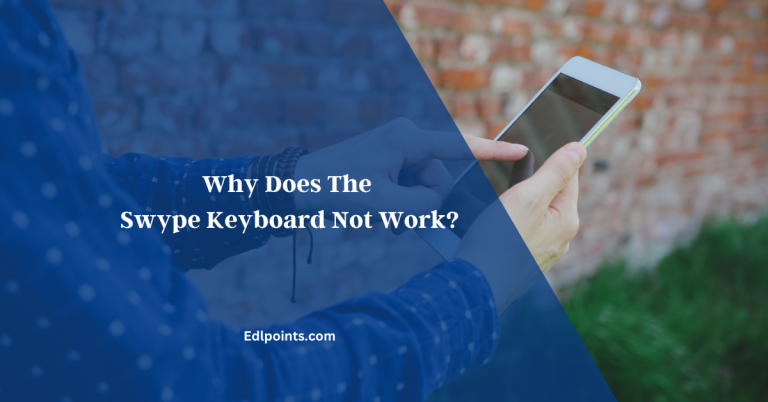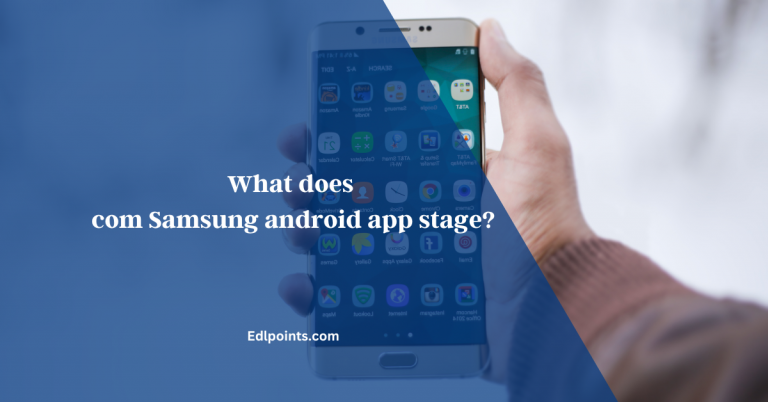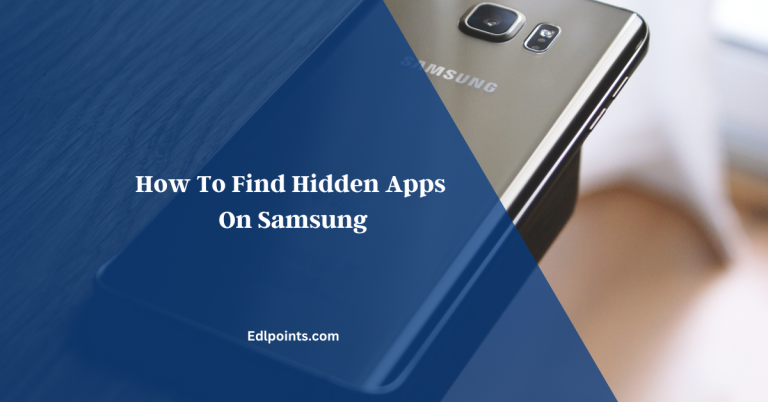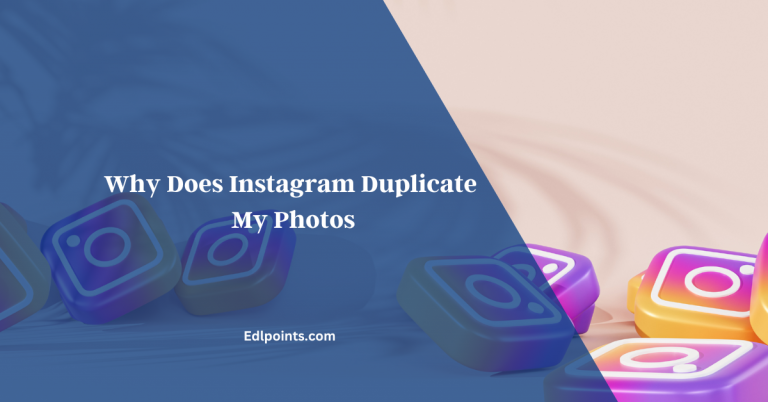What Do Removed Apps And Users Mean In Data Usage?
In our data-driven world, staying connected and informed is more vital than ever. Whether it’s the apps or the people we interact with, everything seems to revolve around data. But have you ever wondered what happens to your data when apps are removed, or users are blocked? It’s a question often unanswered, yet it holds the key to better managing your precious data resources.
In this article, we’ll unravel the mystery of “Removed Apps and Users” and shed light on what they mean for your data usage. So, if you’ve ever pondered the data implications of saying goodbye to apps and users, read on – we’ve got the answers you need!
Table of Contents
What Are Removed Apps and Users?

In the ever-evolving landscape of smartphones, tablets, and online platforms, the term “removed apps and users” might seem like a perplexing riddle at first. Simply put, it refers to the apps and individuals that are no longer part of your digital world.
Removed Apps
These are applications that were once installed on your device but have been uninstalled or deleted. They could range from games you’ve grown tired of to productivity apps you no longer find useful. When you hit that uninstall button, you might think they’re gone for good, but their data remnants can linger in the shadows, affecting your data usage.
Removed Users
In the context of online platforms and social media, “removed users” typically refer to individuals you’ve blocked, unfriended, or unfollowed. While you may believe you’ve severed all ties with them, their influence on your data usage can still persist.
Understanding the impact of these “removed” elements is crucial for efficiently managing your data usage. To unravel this mystery further, let’s explore the implications of removed apps and users in the realm of data consumption.
Data Usage and Its Impact
Data usage has become an integral part of our digital lives, powering everything from streaming videos to sending messages and browsing the web. Staying connected is convenient but can pose data usage challenges:
- Cost Implications:
- One of the most immediate impacts of data usage is the cost associated with it.
- Many mobile plans come with data caps, and exceeding these caps can lead to hefty overage charges.
- Being unaware of your data consumption can result in unpleasant surprises on your monthly bill.
- Sluggish Performance:
- High data usage can slow down your device’s performance.
- When your device is constantly sending and receiving data, it can lead to slower loading times for apps and websites.
- It can be quite frustrating, especially when you’re attempting to use your device in an efficient manner.
- Battery Drain:
- Data-intensive activities, such as streaming high-definition videos or using GPS navigation, can drain your device’s battery quickly.
- Understanding your data usage can help you manage your device’s power more effectively.
- Limited Data Plans:
- Many users have limited data plans, particularly on mobile devices.
- Exceeding your data limit not only incurs extra costs but can also result in reduced data speeds or even temporary suspension of your data service.
- Network Congestion:
- Overuse of data can contribute to network congestion, slowing down data speeds for everyone in a given area.
- This can affect not only your own experience but also that of others sharing the same network.
- Privacy Concerns:
- Data usage can also have privacy implications.
- Certain apps and services may collect and transmit data without your knowledge, potentially compromising your personal information.
- Being aware of your data usage can help you identify and address these privacy concerns.
In light of these impacts, it’s clear that managing your data usage is essential. However, what’s often overlooked is how removed apps and users can play a role in this equation. To understand this better, let’s delve into how removed apps affect your data usage in the next section.
How Removed Apps Affect Data Usage?
You might assume that when you uninstall or remove an app from your device, it’s gone, and so is its impact on your data usage. However, the reality is a bit more complex. Removed apps can still have repercussions on your data consumption in several ways:
- Residual Data:
- When you uninstall an app, it doesn’t always delete every trace of itself.
- Some apps leave behind residual data like cache files, logs, or even temporary files. These remnants can continue to consume data, albeit in smaller quantities.
- Background Processes:
- Certain apps have background processes that continue to run even after removal.
- These processes may periodically connect to the internet to check for updates or perform other tasks.
- Each connection consumes data, and this can add up over time.
- Automatic Updates:
- If the app was set to update automatically, it may still try to do so even if it’s no longer on your device.
- This can result in data usage as the app attempts to download updates it can’t install.
- Cloud Sync:
- Apps that store data in the cloud may continue to synchronize with their servers, even if the app itself is removed.
- This data synchronization can utilize your data plan without your knowledge.
- Advertisements:
- Some apps display ads that are fetched from remote servers.
- Even if you’ve uninstalled the app, these ads can still be requested and displayed using data in the process.
- Data Retention Policies:
- Apps may retain user data even after removal, especially if they have terms and conditions that allow them to do so.
- This stored data can still contribute to your data usage.
To effectively manage your data usage, it’s crucial to be aware of these potential data-draining remnants from removed apps. Knowing that their impact might linger can help you make informed decisions about which apps to uninstall and whether to disable background processes or automatic updates for specific apps.
Now that we’ve explored the impact of removed apps on data usage let’s dive into the intriguing realm of how removed users can influence your data consumption in the next section.
What Does Wireless Caller Mean?
edlpoints.com
How Removed Users Affect Data Usage?
While it might not be immediately evident, the actions you take in the digital world, such as removing or blocking users, can have subtle but notable effects on your data usage. Here’s how removed users can influence your data consumption:
- Content Downloads:
- On various social media platforms and messaging apps, when you remove or block a user, their content may still be available for you to see or download.
- If you choose to access their content, such as images or videos, it can consume data.
- Notifications and Updates:
- Removed users may still be associated with group chats, events, or posts.
- Depending on the platform, you might continue to receive notifications or updates related to their activities even though you’ve removed them.
- These notifications often include data-intensive media files.
- Profile Updates:
- Some social media platforms allow users to update their profiles with new photos or information.
- If you’re still connected to a user who updates their profile, the app may automatically download these updates using your data.
- Cloud Data Sharing:
- In cases where you’ve shared files or documents with removed users through cloud storage or collaboration platforms, those files might still be accessible to them.
- Any changes or updates to shared files can result in data usage.
- Background Activity:
- Even if you’ve removed or blocked a user, some apps and platforms may still have background processes that occasionally interact with their profiles.
- This interaction can consume data, especially if it involves checking for updates or new content.
- App and Platform Policies:
- Different apps and platforms have varying policies regarding user removal and data access.
- Some may limit your access to content from removed users, while others may not. Understanding these policies is essential to managing data usage.
To effectively manage the impact of removed users on your data consumption, consider adjusting your settings and preferences on the platforms you use. For instance, you can disable notifications from removed users, limit access to their content, or review your cloud data-sharing settings. By taking these steps, you can regain control over your data usage and ensure it aligns with your preferences, even in the presence of removed users.
Strategies to Manage Removed Apps and Users
Now that we’ve explored how removed apps and users can impact your data usage, let’s delve into practical strategies to effectively manage them. These strategies will help you optimize your data consumption and maintain control over your digital world:
Regularly Review Installed Apps:
- Periodically review the apps on your device. Identify and uninstall apps that you no longer use or need.
- Pay attention to apps that consume significant data even when not in use, and consider alternatives or settings adjustments.
Clear Cache and Data:
- For apps that you use regularly, clear cache and app data from time to time. This can help remove residual data left behind by uninstalled apps.
- Be cautious when doing this, as it may log you out of apps and delete saved preferences.
Disable Automatic Updates:
- Turn off automatic app updates, especially for apps you no longer use. This prevents data usage for updates that don’t benefit you.
- Manually update essential apps when you have a Wi-Fi connection to avoid using mobile data.
Adjust Background Data Usage:
- Review the background data usage settings on your device. Restrict background data for apps that consume data unnecessarily.
- Ensure apps only use data when you actively open and use them.
Monitor Data Usage:
- Regularly check your data usage through your device’s settings or a data monitoring app. This keeps you informed about your consumption patterns.
- Set data usage limits and warnings to receive alerts when you approach your data cap.
Review and Customize Notifications:
- Customize app notifications to reduce data-consuming notifications from removed users or apps.
- Disable notifications from apps or users that you’ve blocked or unfollowed on social media.
Adjust Privacy Settings:
- Review the privacy settings on social media platforms and online accounts. Limit access to your data and content for removed users.
- Consider adjusting the visibility of your content to specific groups or individuals.
Clear Chat and Message History:
- Delete chat histories or message threads with removed users. These conversations can contain images, videos, and files that consume data when accessed.
Review Cloud Storage Sharing:
- Check your cloud storage accounts for shared files with removed users. Consider revoking access or removing shared files to prevent further data usage.
Read App and Platform Policies:
- Familiarize yourself with the data usage policies of apps and platforms you use. Understand how they handle data related to removed users.
- Make informed decisions about which platforms align with your data management preferences.
By implementing these strategies, you’ll be better equipped to manage removed apps and users effectively, reducing unnecessary data consumption and ensuring a smoother digital experience.
Conclusion
In today’s data-driven world, managing your data usage is not just a smart choice; it’s essential. We’ve uncovered the hidden impacts of “Removed Apps and Users” on your data consumption. Whether it’s those apps you uninstalled or the individuals you’ve blocked, they can still have a say in your data usage.
But fear not! With a little knowledge and some adjustments, you can take control of your data destiny. Regularly review and clean up your apps, customize your notifications, and fine-tune your privacy settings. By doing so, you’ll ensure that your data serves you, not the other way around.
So, as you navigate the digital landscape, remember that understanding the influence of removed apps and users can lead to a smoother, more cost-effective, and more efficient digital journey. Stay informed, stay in control, and make the most of your data.
What is the Root Directory of an SD Card?
EDlpoints.com
FAQ
Why Are “Removed Apps and Users” Using So Much Data?
Removed Apps and Users” may use data due to residual files or background processes that weren’t completely removed when you uninstalled or blocked them. This data usage can accumulate over time.
How Do I Stop “Removed Apps and Users” from Using Data?
To stop them from using data, you can
Clear cache and data for apps you’ve uninstalled.
Disable automatic updates for apps.
Review privacy settings and notifications for blocked users on social media.
How Do I Stop Unused Apps From Using Background Data?
To prevent unused apps from using background data
Go to your device’s settings.
Find the “Apps” or “Applications” section.
Select the app you want to stop.
Disable “Background Data” or “Background App Refresh.”
How Do I View Deleted Apps?
On most devices
Go to your device’s settings.
Look for the “Apps” or “Applications” section.
There, you can view a list of both installed and uninstalled apps.
How Do I View Deleted Apps On Samsung Phones?
On Samsung phones
Go to “Settings.”
Scroll down and tap on “Apps.”
Tap the three-dot menu at the top right.
Select “Show system apps” to view uninstalled apps as well.
How Can I Recover Deleted App Data?
To recover deleted app data, you can
Check if the app has a backup or restore feature within its settings.
Use a data recovery tool if you backed up your device.
Contact the app’s support for specific guidance on data recovery options.






2 Comments